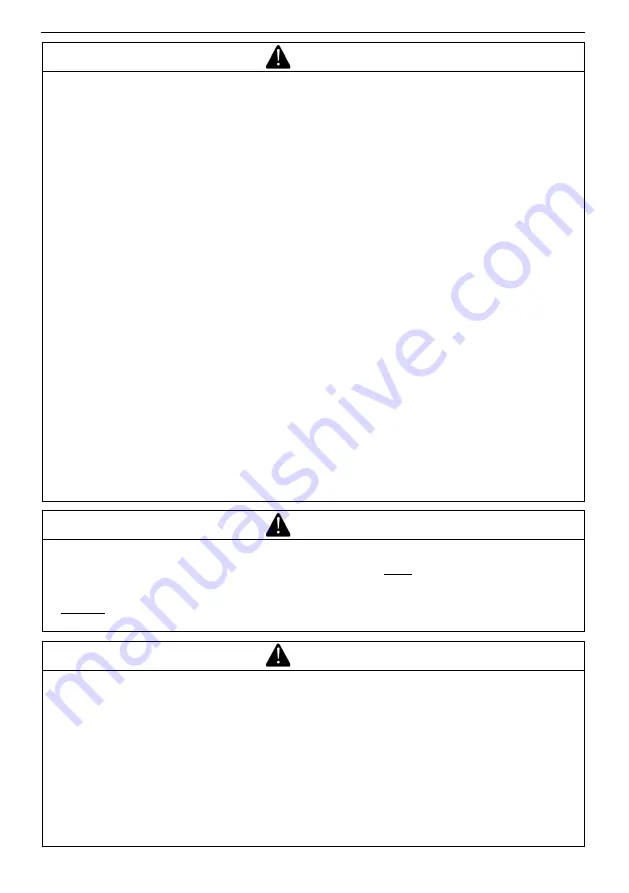
ASTOPAD
®
Instructions for Use
9
WARNING
Risk of injury!
•
When applied parts ASTOPAD COV are used as a top blanket, ensure that
they do not obstruct the patient’s field of vision.
•
Do not use the ASTOPAD until the following error conditions have been rem-
edied through appropriate corrective action:
- Damaged or worn cables, plugs, or connecting socket.
- Damaged housing, damaged or loose control panel.
- Damaged or missing markings/safety signs/warnings.
- Damaged outer cover of the applied parts.
- Alarm testing equipment defective. No optical or acoustic alarm after
switching on using the Standby button (self-test).
- Button(s) which do not function correctly.
- A system that has been exposed to mechanical impact or liquid ingress into
internal electronic system components.
- A system that has previously delivered an electric shock to a person.
- A system that appears to be overheating.
- If at least one of the applied parts in a system triggers or has triggered an
alarm shut-off.
- If the self-test does not activate automatically after switching on with the
Standby button and the heater does start operation immediately.
•
The extension connection cable and the mains cable should not touch the
patient and should not hinder the treating personnel.
•
If the ASTOPAD DUO control unit with installed battery is not used for a
longer period, the battery must be removed.
WARNING
Risk of overheating!
•
For pediatrics under 90 cm in length/height,
use only the applied part ASTO-
PAD COV070.
•
Do not use ASTOPAD COV105 or COV155 or COV180 for pediatrics under
90 cm in length/height.
WARNING
Risk of infection!
•
Use aseptic procedures.
•
Clean and disinfect the equipment after every use and before you return the
equipment for repairs.
•
Route the extension connection cable between the applied part and the con-
trol unit in such a way that it is protected from soiling of blood and body fluids.
•
Prevent the cables from coming into contact with the floor.
•
It is recommended to always place a waterproof and absorbent barrier be-
tween the patient and the ASTOPAD applied part.










































